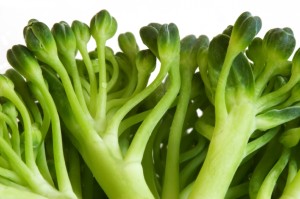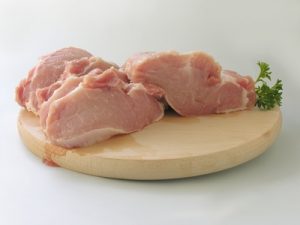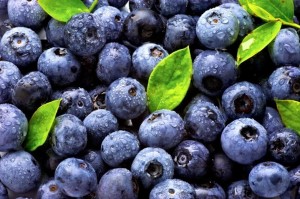Can I Reverse Diabetes?
Type 2 diabetes is often a progressive disease that is preceded by a long period of elevated blood sugar. In fact, for most people who are finally diagnosed with diabetes, medical experts believe they have been on the path for 5 to 10 years. Therefore, most of them have already lost about half of their insulin-making capability.
Although it’s impossible to undo your lifestyle of the last decade, you can take some steps to stop the progression or even reverse diabetes. Recent studies show that losing weight can delay the onset of pre-diabetes or delay its progression to type 2 diabetes. The keys to prevention and management of diabetes or preventing its complications include a healthy diet, regular exercise, and creating an environment that fosters general healthy living.
 For instance, losing a few pounds earlier on when your glucose levels start rising can greatly improve your blood sugar levels, blood pressure, triglycerides, cholesterol levels, and more.
For instance, losing a few pounds earlier on when your glucose levels start rising can greatly improve your blood sugar levels, blood pressure, triglycerides, cholesterol levels, and more.
It is vital for people to get to their ideal weight especially if they have type 2 diabetes or pre-diabetes. Robert Huizenga, MD, an associate professor at the University of California says that people should be athletically fit and have no excess fat.
A diet of healthy eating and 90 minutes of exercise 6 days a week is the best way to manage type 2 diabetes even without medications.
For most people, this is easier said than done. However, with perseverance, commitment, and a positive attitude, you can achieve your ideal, healthy weight. You can set small and achievable goals first and add new goals gradually as you succeed in meeting the small goals.
Research studies recommend setting a small goal of losing about 5 to 7% of the weight you started with in order to improve your health and lower blood sugar, with the intention of keeping the pounds off.
What are the Symptoms of Type 2 Diabetes?
The symptoms of type 2 diabetes usually develop very slowly and this is the main reason why most people may have it and not know it. Here are some of the symptoms you should look for:
- Increased hunger: Since the body does not have enough insulin to move glucose into the cells, your organs and muscles will be depleted of energy thus triggering intense hunger.
- Frequent urination and increased thirst: When excess sugar builds up in your bloodstream, your tissues lose excess fluid to the bloodstream. This is the main reason why you tend to feel thirsty and may urinate and drink more than usual.
- Weight loss: Although most people with diabetes tend to eat more than usual in order to relieve intense hunger, they may also lose weight. Since the body does not have the ability to metabolize sugar, it uses the alternative energy stored in fat and muscles. You end up losing calories and excess sugar in your urine.
- Blurred vision: In case your blood sugar level is too high the fluid in the lenses of your eyes may also be pulled off into the bloodstream. This affects your ability to see or focus.
- Fatigue: Since your cells are deprived of glucose, you become easily irritable and tired.
- Some darkened areas on the skin: If you have type 2 diabetes, you may have some patches of velvety, dark skin in the creases and folds of your body. This is quite common in the neck and armpits. This condition is known as acanthosis nigricans and in most cases, it’s a sign of insulin resistance.
- Frequent infections and slow-healing sores: Your ability to resist infections and heal wounds may be affected.
- Tingling and numbness of the feet and hands
- Impotence
Are there any Forms of Natural Treatment for Diabetes Available Today?
-
Figleaves
Due to its anti-diabetic properties, diabetics need less insulin when using fig leaf extract for treating diabetes. The extract should be taken first thing in the morning preferably with breakfast. Alternatively, your fig leaves can be boiled in freshly boiled water and taken as a tea.
-
Black seed
 Nigella Sativa, also known as black seed has been used for over 2000 years to treat numerous diseases including diabetes, pancreatic cancers, acne, and more.
Nigella Sativa, also known as black seed has been used for over 2000 years to treat numerous diseases including diabetes, pancreatic cancers, acne, and more.
Diabetics should take 6 teaspoons of black seed oil per day for 7 days. Take black seed oil three different times. Then take 4 teaspoons per day for 4 days; 2 in the morning and 2 in the evening. Follow by taking two teaspoons per day for two days.
-
Fenugreek
Take 10 to 30 grams of fenugreek with each meal per day. However, you should not take fenugreek at the same time as other medications. Wait at least one hour before taking it. Do not take more than 90 grams because it might cause nausea and stomach upset. Common side effects of fenugreek include gas and diarrhea.
-
Cinnamon
A study done by Khan and associates in 2003 reported cinnamon as a good natural treatment for diabetes. 60 diabetic people were tested and a third of them were given a placebo. The results were quite impressive with glucose down about 18% and the overall health of the group increased. The results also showed reduced levels of triglycerides and LDL cholesterol. Taking about a teaspoon of cinnamon per day is critical to softening your cell membranes. Cinnamon reduces your need for insulin because it actually mimics insulin.
-
Grape seed extract
Grape seed exact performed quite well in studies conducted in Toyama, Japan, Portsmouth, UK, and Romania in 2009. Grape seed extract is great for setting up strong defensive mechanisms against the reactive oxygen that is produced by hyperglycemic conditions and protecting the liver cells. Grape seed extract comes in 50 to 100 mg capsules but, do not take more than 300 mg per day.
-
Olive oil
The University of Jaen has been researching the consumption of olive oil and preventing diabetes. They found that an olive oil-rich diet can help prevent diabetes. Olive oil can help reduce your blood sugar levels including triglycerides and LDL. Reducing your cholesterol levels can help prevent various diseases including atherosclerosis, cardiovascular disease, and diabetes.
It’s essential to keep in mind that, the prevention of diabetes actually begins with proper diet and weight management. The Mediterranean diet has proven to be very beneficial in the prevention and treatment of diabetes by using coconut oil and olive oil, which are rich in monounsaturated fats instead of saturated fats. Drink about ¼ cup of the oil. You can also mix one teaspoon of olive oil and one tablespoon of lecithin especially if you prefer using lecithin.
-
Bitter melon
Bitter melon contains insulin-like properties which is the main reason why it works well with diabetes treatment. The insulin-like properties help in lowering glucose levels in blood and urine. Juice bitter melon and take it on an empty stomach first thing in the morning. You can also grind the seeds into a powder and eat them or use the bitter melon to make tea.
-
Vitamin C
Studies show that using between 100mg and 600mg of vitamin C can help normalize your blood glucose levels in as little as 30 days. Diabetics have complications of too much sugar in the body which can eventually lead to nerve damage and eye problems.
How Can You Create the Right Diet for Diabetes?
The term “diabetes diet” in this context refers to the food that is eaten every day and is not simply a short-term solution to lose weight or treat diabetes temporarily. You should choose a diabetes diet plan you will adhere to for the rest of your life. Therefore, fad diets that eliminate several food groups are not recommended because they are unsustainable.
The best diabetes diet should be customized to your needs without focusing only on cutting calories but also on making the most of the calories you consume.
A healthy diet should be rich in vegetables, fruits, low-fat dairy, heart-healthy oils, and whole grains. It should also encourage lowering your salt intake and healthy preparation of food such as broiling, roasting, grilling meats, and baking. Another essential element of a healthy diabetes diet is limiting saturated fats. Daily calories from saturated fats should be less than 7%. Also, you should avoid trans fats and limit your daily calorie intake to less than 200 milligrams.
Stick to a low-carbohydrate diet and choose lean proteins to keep you energized and full without too much fat. Some of the good sources of protein include poultry without skin and lean fish. If you prefer pork or beef, choose lean cuts, trim off the fat and avoid frying food. Stick to low-fat or non-fat dairy options for yogurt, cheese, milk, and other dairy products.
What are the Recommendations for a Healthy Diabetes Diet?
- Eat 3 meals per day, and be sure to include healthy snacks as needed to help regulate blood glucose.
- Eat appropriate proportions
- Maintain a regular meal schedule by eating at the same time each day.
- Sip low-calorie beverages or water throughout the day.
- Eat more vegetables
What are some of the plant foods used for the Treatment of Diabetes?
There are numerous plans that can be used for diabetes treatment, especially for people with type 2 diabetes. These plants include:
- Buckwheat

- Coffee
- Cloves
- Brewer’s yeast
- Sage
- Peas
- Broccoli
- Okra
Most of these foods are rich in vitamins, minerals, and fiber which are vital for good health in diabetics. Some new studies show that plant foods such as coffee, cloves, and cinnamon may actually help insulin and aid in fighting inflammation.
Cinnamon extracts improve glucose metabolism which triggers insulin release and cholesterol metabolism. On the other hand, clove leaf extracts improve insulin function and also lower LDL, total cholesterol, triglycerides, and glucose. Recent studies show that some compounds in coffee reduce the risk of developing diabetes by increasing insulin sensitivity.
What do High and Low GI mean?
The GI ranks food according to the rate at which they are broken down by the body to form glucose.
High GI foods are quickly converted into glucose. Examples of foods with a glycemic index include potatoes, oranges, sweetened drinks, and white bread.
A low Glycemic Index diet mainly incorporates foods that are slowly converted into energy and typical examples include beans, milk, berries, leafy vegetables, and whole-grain bread.
Since low GI foods are broken down more slowly, they don’t cause spies (sharp increases) in your blood sugar level compared to foods with a high glycemic index. Therefore, they are a good option for maintaining stable blood sugar levels.
Foods with a low glycemic index leave you feeling full over a longer period of time.
Can a low Glycemic Index (GI) Diet Prevent Diabetes?
A low GI diet can be effective for diabetics if they apply portion control to foods with high carbohydrate content. Foods with high glycemic index are broken down quickly causing blood sugar levels to rise very sharply. This is particularly dangerous for people with diabetes as the ability to control blood sugar levels is greatly reduced or almost non-existent.
What are the Advantages of a Low GI Diet?
- Their nutritional value is higher compared to high GI food equivalents
- Reduce the demand for insulin immediately after eating
- Provide energy for prolonged periods and it’s unlikely that you’ll feel hungry before it’s time for the next meal
- You can eat a varied diet
- It’s easier to follow food choices with glycemic index charts
Do low GI diets have any disadvantages?
The main disadvantage of a low GI diet for diabetics comes if the carbohydrate content of a meal is too high for the body to cope with. For instance, bran-based cereal is typically low GI but it contains a high carbohydrate value.
The carbohydrate content of a large portion of bran-based cereal could be too high for people with diabetes which may cause their blood sugar levels to rise very high.
However, this should not be a problem if people with diabetes apply if portion control to foods that have a high carbohydrate content.
What low GI foods are suitable for people with diabetes?

- Whole grains
- Unsweetened dairy products
- Lean meats
- Non-starchy vegetables
- Legumes
Care must be taken with vegetables and fruits because their GI value can vary significantly.
- Low GI fruits include grape fruit, kiwi fruit, plums and berries.

- High GI fruits include mangoes, pears, oranges, bananas, raisins and dates.
- Low GI vegetables include cabbage, peppers, cauliflower and lettuce.
- High GI vegetables include potatoes, sweet corn, beetroots, parsnips and carrots.
What is the Atkins diet?
The Atkins Diet is a low carbohydrate diet plan that was created by Robert C. Atkins in 1972. The diet emphasizes fats and protein while restricting carbohydrates. It has several phases for losing weight starting with a low carbohydrate diet.
Can the Atkins diet help control diabetes?
The Atkins Diet limits carbohydrates in order to change the metabolism of the body from metabolizing glucose for energy to converting fat for energy.
According to Dr. Atkins, the main reason why most low-fat diets fail is that dieters feel hungry and the Atkins diet is much easier because dieters generally feel satisfied when they eat adequate fiber, protein, and fat. Since the Atkins Diet emphasizes avoiding carbohydrates, it can certainly help diabetes.
Is alcohol bad for diabetics?

Beyond all the safety and health concerns about alcohol, people with diabetes need to be very cautious. The action of some diabetes medications and insulin is to lower blood sugar. Therefore, diabetics should not drink on an empty stomach or when their blood glucose is low.
Keep in mind that there is a risk of developing hypoglycemia up to 24 hours after drinking. Therefore, if you have diabetes and want to drink alcohol, you should always check your blood sugar level before drinking, eat before drinking and keep an eye on what and how much you are drinking.
You should also check your blood sugar level before retiring to bed and make sure it is within the safe level (100 to 140 mg/dl).
The symptoms of hyperglycemia and too much alcohol can be very similar; dizziness, disorientation, and sleepiness. Always wear a diabetes ID if you are hypoglycemic to ensure that nobody will confuse hypoglycemia for too much alcohol. This will ensure that you get proper assistance and treatment.
Here’s to controlling your diabetes!


